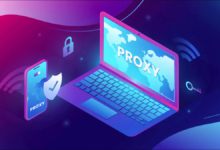Stmoro: Exploring Its Role in Modern Technology and Beyond

In the rapidly advancing field of modern technology, new terminologies, frameworks, and innovations frequently emerge to meet evolving industry demands. One such term gaining traction in recent discussions is “Stmoro.” Though still under exploration, the concept of Stmoro represents a potential breakthrough in various technological domains, from software development to AI-driven systems. This article delves into what Stmoro represents, its current applications, and its possible implications for the future of technology and beyond.
What Is Stmoro?
“Stmoro” appears to be an emerging framework or tool, possibly conceptualized to address specific technical or computational needs. While details remain somewhat scarce due to its relatively recent emergence, some indications suggest that Stmoro could function as either a standalone framework or a set of standards aimed at improving efficiency, interoperability, and adaptability in software and hardware ecosystems.

Its unique name has garnered curiosity among tech professionals and enthusiasts, prompting questions about its role, purpose, and the technological gaps it might address. Some speculate that Stmoro could facilitate data processing, communication protocols, or even act as a bridge in the rapidly expanding realm of artificial intelligence (AI) and machine learning (ML).
The Technical Backbone of Stmoro
Understanding the core technical characteristics of Stmoro requires an exploration into the functionality it may offer. Typically, modern frameworks like Stmoro possess three main components:
- Data Processing and Optimization: Many modern frameworks and tools emphasize efficient data processing to handle massive amounts of information at rapid speeds. If Stmoro follows this pattern, it could provide robust data optimization features. This might include data filtering, data compression, or even accelerated algorithms that make data accessible in real-time.
- Interoperability Standards: For any tool to be valuable in today’s technology landscape, interoperability is critical. Stmoro could offer standardized protocols to allow seamless communication across platforms and devices, ensuring compatibility between legacy systems and newer technologies. This aspect would make Stmoro a valuable asset in multi-platform environments, supporting integration and collaboration.
- Security and Scalability: Another essential feature in today’s technology frameworks is a focus on secure and scalable architecture. If Stmoro encompasses these aspects, it would have built-in security features, possibly including encryption protocols, authentication mechanisms, and resilience against potential cybersecurity threats. Scalability would also make Stmoro attractive for enterprises, as it could adapt to growing business needs without sacrificing performance.
Applications of Stmoro in Modern Technology
Although Stmoro remains somewhat conceptual, its potential applications span across various sectors, including AI, Internet of Things (IoT), and even blockchain technologies. Here’s how it could impact these areas:
- Artificial Intelligence and Machine Learning: In AI and ML, frameworks need to manage vast datasets and ensure that model training is both efficient and effective. Stmoro could streamline these processes by providing optimized data pipelines, enhanced processing speeds, and support for complex algorithms. Its interoperability features might also allow developers to integrate models from different frameworks, creating a unified approach to AI development.
- Internet of Things (IoT): The IoT ecosystem involves connecting numerous devices, each generating and sharing data. Stmoro could play a role in the IoT field by offering a stable protocol for data exchange, helping devices communicate and interact securely and efficiently. Its scalability would support the expansion of IoT networks, while its security features would safeguard the vast amounts of data involved in IoT ecosystems.
- Blockchain and Decentralized Applications: Blockchain technology, with its decentralized nature, poses unique challenges for interoperability and scalability. If Stmoro addresses these challenges, it could facilitate cross-chain communication, allowing different blockchains to interact seamlessly. Additionally, the framework’s potential security features could support data integrity and transaction authenticity within decentralized applications.
- Cloud Computing and Distributed Systems: For businesses that rely heavily on cloud infrastructures, Stmoro could provide frameworks for efficient resource allocation, data security, and processing capabilities that work across distributed systems. As more organizations adopt hybrid cloud models, the need for frameworks that can operate across different environments becomes paramount. Stmoro’s potential interoperability could bridge these gaps and offer more cohesive cloud solutions.
The Future of Stmoro: What Lies Ahead?
As with any new technology, the future of Stmoro will depend on its adaptability, adoption rate, and the extent to which it addresses real-world challenges. With technology moving towards more interconnected and intelligent systems, Stmoro’s potential for fostering collaboration between AI, IoT, and blockchain could make it a cornerstone in future technological infrastructure.
Potential Challenges
While the prospects for Stmoro are exciting, the framework might also face certain challenges. The primary hurdle could be achieving widespread adoption, which often depends on compatibility with existing systems and proving its value to developers and businesses. Additionally, ensuring that Stmoro remains adaptable to future technologies and security threats will require continuous evolution and support from the developer community.
Another challenge could lie in maintaining an open and transparent approach to development. With tech communities placing increasing emphasis on transparency and open-source contributions, the success of Stmoro could hinge on its openness to community input, fostering collaboration, and ensuring that it evolves in line with industry needs.
Conclusion
Stmoro is a promising addition to the modern technological landscape, with potential applications in fields as diverse as AI, IoT, and blockchain. Its emphasis on data processing, interoperability, and security aligns with the needs of today’s complex, data-driven environments. If Stmoro can overcome its initial adoption challenges and prove its adaptability, it may play a transformative role in the future of technology.
FAQs About Stmoro
1. What is Stmoro?
Answer: Stmoro is a newly emerging framework or tool that appears to be designed to optimize data processing, ensure interoperability, and enhance security across software and hardware platforms. Though specific details are still limited, it’s anticipated to serve in various tech sectors, including AI, IoT, and blockchain.
2. What is the primary purpose of Stmoro?
Answer: Stmoro’s main purpose is likely to improve efficiency in managing data, facilitate seamless communication between different technologies, and provide robust security features. By doing so, it aims to support more cohesive and interconnected tech ecosystems.
3. What are the key features of Stmoro?
Answer: Key features of Stmoro include:
- Data Optimization: Enhanced data handling and processing speeds.
- Interoperability: Standardized protocols for compatibility across platforms.
- Security: Built-in security measures like encryption and authentication.
- Scalability: Ability to adapt to growing system demands.
4. In which industries could Stmoro be used?
Answer: Stmoro could be applied across several industries, including:
- Artificial Intelligence (AI) and Machine Learning (ML)
- Internet of Things (IoT)
- Blockchain and Decentralized Applications
- Cloud Computing and Distributed Systems
5. How does Stmoro improve interoperability?
Answer: Stmoro likely uses standardized communication protocols that allow different platforms, devices, and applications to work together smoothly. This reduces compatibility issues and makes it easier for developers to integrate Stmoro with other frameworks and systems.
6. Is Stmoro secure?
Answer: Yes, security is expected to be a core component of Stmoro. It may include features like data encryption, secure authentication, and protection against cyber threats, making it reliable for sensitive data and applications.
7. Can Stmoro be used with existing technologies?
Answer: Stmoro is being designed with compatibility in mind, so it should work alongside existing technologies. Its interoperability focus suggests that it will be capable of bridging newer systems with legacy systems, providing flexibility in hybrid tech environments.
8. What makes Stmoro different from other frameworks?
Answer: Stmoro differentiates itself by combining high-performance data processing, extensive interoperability, and robust security into one comprehensive framework. This blend of features makes it versatile and adaptable, suited to modern demands for interconnected and secure technological solutions.
9. Is Stmoro open-source or proprietary?
Answer: Details about whether Stmoro is open-source or proprietary are currently unclear. However, its future adoption may depend on its accessibility and openness to community contributions.
10. How can developers get started with Stmoro?
Answer: Once Stmoro becomes publicly available, it’s likely that developers can start with it by accessing official documentation, SDKs, and tutorials. These resources may guide developers on integrating Stmoro into their projects and utilizing its features effectively.
11. What are the challenges of using Stmoro?
Answer: Some anticipated challenges include potential learning curves for new users, integration with certain legacy systems, and achieving widespread adoption. Additionally, as with any new framework, developers will need to keep up with updates and best practices to ensure optimal use.
12. How does Stmoro support scalability?
Answer: Stmoro is expected to be designed for scalability, allowing systems to handle increased data and processing demands as they grow. This feature is beneficial for organizations that expect growth or fluctuations in data and usage.
13. What is the future of Stmoro?
Answer: If Stmoro addresses industry challenges effectively and proves adaptable to new technological advances, it could play a foundational role in emerging tech landscapes. Its future may involve further enhancements, broader adoption, and expansion across additional industries.





